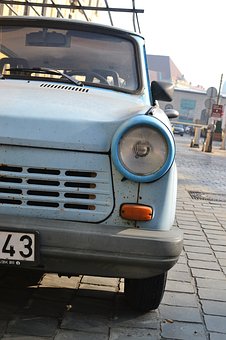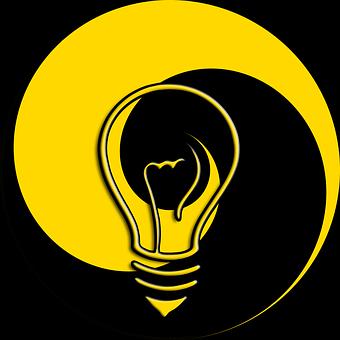
篇1:中考英语动词核心知识点精讲
情态动词
1.考查情态动词表示“推测”的用法
[考点快忆] 表示肯定推测的情态动词有:must“一定;准是”,may“也许;可能”,might“或许”;表示否定推测的情态动词有:can't“不可能”, couldn't“不会”,may not“也许不”,might not“或许不”;can表示推测时不用于肯定句,may表示推测时不用于疑问句。
2.考查情态动词引起的一般疑问句的答语
[考点快忆] 回答must时,肯定答语用must,否定答语用needn't或don't have to。回答need时,肯定答语用must,否定答语用needn't。回答may时,肯定答语用may,否定答语用mustn't 或can't。
3.考查情态动词的意义
[考点快忆] must “必须”;have to“不得不”;need “必须;需要”;can(could)“能;可能”;may (might) “可以;可能”;shall,will (would)“将;会;愿意;要”;should“应当”。
“had better (not) + 动词原形”表示建议;have to / has to / had to的否定,疑问形式要借助于助动词do / does / did。
篇2:中考英语动词核心知识点精讲
带动词ing形式
1.?keep?doing坚持做某事?
2.?keep?sb.?doing使某人一直做某事?
3.?practise?doing?sth.练习做某事?
4.?enjoy?doing喜欢做某事?
5.?finish?doing完成做某事?
6.?be?afraid?of?doing?害怕做某事?
be?busy?doing?忙于做某事?
7.?look?forward?to?doing盼望做某事?
8.?how?about?doing、./what?about?doing做某事怎么样?
9.?spend?some?time?(in)doing花时间做某事?
10.?spend?some?money?(in)?buying?花钱做某事?
11.?feel?like?doing想做某事?
12.?stop/keep/prevent?…?from?doing阻止某人做某事?
13.?thank?sb?for?doing感谢某人做某事?
14.?thanks?for?doing感谢做某事?
15.??do??some?cooking/cleaning/reading/shopping/washing做点饭、打扫一下卫生、读点书、逛逛街、洗洗衣服?
16.?go?swimming/fishing/shopping/skating/boating去游泳、钓鱼、??逛街、?滑冰、?划船?
17.?mind?doing介意做某事?
18.?can’t?help?doing情不自禁做某事?
19.?consider?doing考虑做某事?
20.?have?fun?doing?sth..?做某事有趣??
21.?have?difficulty?doing?sth做某事有困难?
? have?trouble?doing?sth做某事有困难????
have?problem?doing?sth?做某事有困难?
22.?waste?time/money?doing浪费时间或金钱做某事
23.?instead?of?doing代替做某事?
24.?miss?doing?错过做某事?
25.?hold?on?to?doing坚持做某事?
26.?pay?attention?to?doing集中精力做某事?
27.?suggest?doing建议做某事?
28.?It’s?time?for?doing??到该做某事的时间了????
It’s?time?to?do?sth.?到该做某事的时间了?
29.?There?is?sb?doing?sth有人正在做某事?
30.?be?used?to?doing?sth?习惯做某事?
31.?be?used?for?doing?sth被用来做某事?
32.??have?a?lot?of?experience具有做某事的丰富经验?
33??sb??allow??doing?sth允许做某事?
34.??put?off?doing?sth推迟做某事?
35.??succeed?in?doing?sth?成功做某事?
36.??end?up?doing以做某事结束?
37.??give?up?doing放弃做某事?
篇3:中考英语动词核心知识点精讲
含有带to的动词不定式句型
1.?It’s?time?to?do?sth.?该是做某事的时候了?
2.?It?takes?sb.?some?time?to?do?sth做某事花了某人时间?
3.?tell/??ask/?want/encourage/invite/?sb.?to?do?sth.告诉、叫、想、鼓励、?邀请某人做某事?
4.?Would?you?like?to?do?sth.?你想做某事吗??
5.?It’s?good/bad?to?do?sth做某事好/不好?
6.?It’s?good/bad?for?sb.to?do?sth.对某人来说,做某事好/不好?
7.?be?+adj.+?enough?to?do?sth.足够+形容词做某事?
8.?sb.?is?ready?to?do?sth.某人准备好做某事?
9.?It’s?+?adj.+?for?sb.?to?do?sth.?做某事对某人+形容词(做这件事对你好)?
10.?It’s?+?adj.+?of?sb.?to?do?sth某人做某事+形容词?(你做这事真好)?
11.?would?like/love?/decide/want/wish/to?do?sth.?想、喜欢、决定、想、希望做某事?
12.?would?like/love?sb.?to?do?sth.想让某人做某事?
13.??prefer?to?do??rather??than?do?sth.宁愿做某事而不愿做某事?
例如:I?prefer?to?read?rather?than?write?.意思同?I?prefer?reading?to?writing.?又如:I?prefer?to?stay?at?home?rather?than?go?out.??
再如:prefer=like?better?,即:I?prefer?red.=I?like?red?better.
14.?how/?when/where/whether?to?do?sth怎么、什么时候、在哪里、要不要做某事?
15.?can’t?wait?to?do??迫不及待做某事?
16.?too?…?to?do?…????太怎么样而不能做某事?
17.?be?afraid?/ready/able/sure?to?do害怕、准备、能够、确定做某事?
18.?It’s?time?to?do?sth到该干某事的时候了?
19.?My?job?is?to?do?sth我的工作是做某事?
20.?My?dream?is?to?do?sth我的梦想是做某事?
21.?My?hobby?is?to?do?sth我的业余爱好是做某事?
22.?refuse?to?do?sth拒绝做某事?
23.?warn?sb?to?do?sth告诫某人做某事
24.?pretend?to?do?sth假装做某事?
25.?teach/learn?to?do?sth?教做某事、/学习做某事?
26.?need?to?do?sth需要做某事?
27.?be?willing?to?do?sth愿意做某事?
28.?.try?to?do?sth努力做某事?
29.?try?one’s?best?to?do?sth尽某人最大努力做某事?
30.?agree?to?do?sth同意做某事?
31.?seem?to?do?sth?好像似乎做某事?
32.?plan?to?do?sth?/make?a?plan?to?do?sth计划做某事?
33.?in?order?to?do?sth??为了做某事?
34.?have?a?chance?to?do?sth有机会做某事?
35.?find?it?+adj?+?for?sb?to?do?sth发现做某事是……?
36.?have?sth?to?do有某事要做?
37.?There?is?sth?for?sb?to?do对某人来说,有某事要做?
38.?be?anxious?to?do渴望做某事?
39.?afford?to?do?sth?支付得起做某事?
篇4:中考英语动词核心知识点精讲
【考点直击】
1.动词的八种时态的构成及用法;
2.动词被动语态的构成及用法;
3.非谓语动词的构成及用法;
4.近义动词的用法区别。
【名师点睛】
1.动词的时态
英语时态用共有十六种时态,其中常用的有8种,它们是:一般现在时、一般过去时、一般将来时、现在进行时、现在完成时、过去进行时、过去完成时和过去将来时。
(1)一般现在时的基本用法
1) 经常性或习惯性的动作,常与表示频度的时间状语连用。
时间状语: every…, sometimes, at…, on Sunday
I leave home for school at 7 every morning.
2) 客观真理,客观存在,科学事实。
The earth moves around the sun.
Shanghai lies in the east of China.
3) 表示格言或警句中。
Pride goes before a fall.
【注意】此用法如果出现在宾语从句中,即使主句是过去时,从句谓语也要用一般现在时。
例:Columbus proved that the earth is round..
4) 现在时刻的状态、能力、性格、个性。
I don't want so much.
5) 某些动词如 come, go, move, stop, leave, arrive, be, finish, continue, start 等,在一般现在时句中可用来表示将来肯定会发生的动作。
The train comes at 3 o'clock.
6) 在时间状语从句或条件状语从句中,一般现在时代替一般将来时。
I'll help you as soon as you have problem.
Tell Xiao Li about it if you meet him.
(2)一般过去时的用法:
表示过去某一时刻或某一段时间内所发生的动作或情况,通常一般过去式带有表示动作时间状语的词,词组或从句,如 yesterday, the day before last, last week, two days ago 等,上下文清楚时可以不带时间状语。
I worked in that factory last year.
【注意】
1) 过去经常反复发生的动作,也可用used to或would加动词原形来表达,例如:
I used to go fishing on Sundays.
2) “used to”也可用于表示过去曾经存在过的状态。例如:
This river used to be clean.
(3)一般将来时的用法
1)表示将来的动作或状态。例如:
I shall attend the meeting tomorrow.
2)表示将来反复发生的动作或存在的状态。例如:
He will go to see his mother every Saturdays.
3)表示将来的意愿,决心,许诺, 命令等时常用will,征求对方意见,主语是第一人称时,常用shall。
I will do my best to catch up with them.
Shall I open the door?
4)be + going + 动词不定式。也是一种将来时句型,表示打算,计划,最近或将来要作的某事。
I am going to Beijing next week.
5)be + 动词不定式。表示有职责,义务,可能,约定,意图等。
There is to be a meeting this afternoon.
We are to meet the guests at the station.
6)be about + 动词不定式,表示马上,很快作某事。
They are about to leave.
(4)现在进行时的用法
1) 现在进行时的用法表示说话者说话时正在发生或者进行的动作, 它注重
现在正在进行的动作,而不管动作从什么时间开始,到什么时间结束。
What are you doing now?
I am looking for my key.
2) 现在进行时表示目前一段时间内正在进行的动作(但说话时这个动作不一定在进行)。
The students are preparing for the examination.
3) 某些动词的现在进行时可以表示即将发生的动作,这些动词有 arrive, come, leave, start等。
They are going to Hong Kong tomorrow.
【注意】有些动词一般不可以用于进行时态
①表示状态的动词,尤其是静态动词,如:be, have
②表示认识、知觉和情感的动词,如:know, think, hear, find, see, like, want, wish, prefer等。
(5)现在完成时的用法
1) 现在完成时表示在说话之前已经完成或刚完成的动作。
I have bought a ten-speed bicycle.
They have cleaned the classroom.
2) 现在完成时表示动作从过去开始持续到现在,或者还有可能持续下去的动作或状态。 现在完成时常与for 和 since 引导的短语或从句连用。
We have lived here since 1976.
They have waited for more than two hours.
【注意】
一般过去时与现在完成时的区别
试比较:
I saw this film yesterday.(强调看的动作发生过了,不涉及现在)
I have seen this film. (强调对现在的影响,电影的内容已经知道了。)
(6)过去进行时的用法
表示过去某时正在进行的状态或动作。例如:
I was watching TV when she came to see me.
【注意】
过去进行时和一般过去时都是过去发生的事情,但过去进行时侧重表示过去某一时刻正在进行的动作或所处的状态,强调动作的连续进行,而一般过去时则表示单纯的过去事实,例如:
They were building a house last month. (上个月正在建造,建造好与否不知)
They built a new house last month. (上个月建造好了,动作已经完成)
(7)过去完成时的用法
过去完成时表示过去某一时刻或某一动作之前完成的动作或所处的状态,过去完成时常和 by , before 等词组成的短语和从句连用。
We had already learned two thousands words by the end of last year.
When we arrived at the station, they had waited for more than twenty minutes.
(8)过去将来时的用法
过去将来时表示从过去某个时间看将要发生的动作或存在地状态,过去将来时较多地被运用在宾语从句中。例如:
They were going to have a meeting.
I told him that I would see him off at the station.
2.动词的语态
语态有两种:主动语态和被动语态。
主语是动作的发出者为主动语态;主语是动作的接受者为被动语态。
(1)被动语态
1) 被动语态最基本的句型结构是: be +及物动词过去分词
2) 被动语态中的谓语动词一定要是及物动词
因为被动句中的主语是动作的承受者,某些短语动词如look after, think of, take care of, work out, laugh at等,也可用于被动语态。
The children were taken good care of by her.
【注意】
短语动词中的介词或副词变成被动语态时不可遗漏。
3) 主动语态变为被动语态要加“to”的情况
若宾语补足语是不带to 的不定式,变为被动语态时,该不定式前要加"to"。此类动词为感官动词,如:feel, hear, help, listen to, look at, make, observe, see, notice, watch等。例如:
The teacher made me go out of the classroom.
I was made to go out of the classroom (by the teacher).
4) 主动形式表示被动意义
如wash, clean, look, cut, sell, read, wear, feel, draw, write, sell等动词虽然用做主动形式却表示被动的意义。例如:
The food tastes good.
3.非谓语动词
对非谓语动词的考点是:感官动词后不定式作宾语补足语和动词ing形式作宾语补足语的用法;一些特殊动词的动词不定式作宾语补足语时不带to,但变为被动语态时就要带to;有些动词既可接不定式也可接动词ing形式作宾语,但表达的意思不同。这些都是历年中考的重点。
(1)非谓语动词的形式
非谓语动词指的是在句中起名词,形容词或副词作用的动词形式,而不是作谓语的动词形式。 动词的非谓语形式分为动名词,分词,动词不定式。
(2)不定式作宾语补足语
Father will not allow us to play on the street.
(3)不定式作目的状语
He ran so fast as to catch the first bus.
(4)用不定式和分词作补足语都可以的动词
这样的动词有感官动词如:see, hear, look, notice, observe, feel等,使役动词如:have, make, leave, keep, get等。接不定式表示动作的完整性,真实性;+doing 表示动作的连续性,进行性。
I saw him work in the garden yesterday.
昨天我看见他在花园里干活了。(强调"我看见了"这个事实)
I saw him working in the garden yesterday.(强调"我见他正干活"这个动作)
昨天我见他正在花园里干活。
(5)用不带to不定式的情况
使役动词如: let, have, make等和感官动词如: see, watch, hear, listen to, smell, feel, find 等后作宾补,省略to。在被动语态中则to不能省掉。
过去时表示过去某时发生的动作或单纯叙述过去的事情,强调动作;现在完成时为过去发生的,强调过去的事情对现在的影响,强调的是影响;一般过去时常与具体的时间状语连用。
(6)接动名词与不定式意义不同
1) stop to do 停止,中断做某事后去做另一件事。
stop doing 停止做某事。
2) forget to do 忘记要去做某事。 (未做)
forget doing 忘记做过某事。 (已做)
3) remember to do 记得去做某事 (未做)
remember doing 记得做过某事 (已做)
4) try to do 努力,企图做某事。
try doing 试验,试着做某事。
5) go on to do 做了一件事后,接着做另一件事。
go on doing 继续做原来做的事。
6) mean to do 打算、想
mean doing 意味着
4. 容易混淆的常用动词的辨析
(1) say, speak, talk, tell的用法。
1) say表示讲话,作为及物动词使用,后跟宾语或宾语从句。
He said he would go there.
It's time to leave. We have to say goodbye to you.
2)speak表示“讲话”,一般作为不及物动词使用,而有时作为及物动词后面跟上各种语言作为宾语。
Do you speak English?
May I speak to Mr Pope, please?
3) talk表示“谈话”,是不及物动词,与to , about, with等连用,才可以接宾语。
What are you talking about?
Mr Jackson is talking with my father in the office now.
4) tell 表示“告诉,讲述”是及物动词,可以带双宾语或复合宾语。
She told us an interesting story yesterday.
My teacher told me that we would have an English exam the next month.
(2) look, see, watch和watch的用法。
1) look强调“看”这个动作,是不及物动词,常与at连用,然后接宾语。
Look! The girl is swimming in the lake.
Look at the picture carefully. Can you find something unusual?
2) see 指“看见”某物,强调的是结果。
They can't see the words on the blackboard.
Does Lily often go to see a film on Sunday?
3) watch 指的是“观看”,“注视”之意。
The twins are watching TV now.
He will go to watch a volleyball match.
4) read指“看书”、“看报”、“阅读”之意。
Don't read in the sun.
I like to read newspapers when I am free.
(3) borrow, lend和keep的区别。
1) borrow意思为“借入”,常常与from连用,是非延续性动词,表示瞬间即能完成的动作。
Meimei borrowed a book from the library just now.
May I borrow your dictionary?
2) lend 是“借出”之意,常常与to连用,同borrow一样,是非延续性动词,只表示瞬间即能完成的动作。
Uncle Wany has lent his car to Mr Li.
Could you lend us your radio, please?
3) keep是“保存”的意思,动作可以延续。
How long can the recorder be kept?
The farmer kept the pat for two weeks.
(4) bring, take, carry 和get的用法。
1) bring意思为“拿来”、“带来”。指将某物或某人从别处“带来”。
Bring me the book, please.
May I bring Jim to see you next Saturday?
2) take意思是“拿走”,“带走”,把某物或某人从这里“带来”或“拿到”某处之意。
It looks like rain. Take a raincoat with you.
Mother took the little girl to the next room.
3) carry 是“带着、搬运、携带”的意思,指随身携带,有背着、扛着、抱着、提着的含义,不表明来去的方向。
Do you always carry a handbag?
The box is heavy. Can you carry it?
4) get是去某处将某物拿回来。
Please go to my office to get some chalk.
There is no water in the bottle. Why not get some?
(5) wear, put on和dress的区别
1) wear是“穿着”“戴着”的意思,可以用于穿衣服、穿鞋、戴帽子、戴手套、佩戴首饰等,强调“穿着”的状态。
Tom always wears black shoes.
He wears a raincoat even when it is fine.
She doesn't like to wear a red flowers in her hair.
2) put on是“穿上”“戴上”的意思,可以用于穿衣服、穿鞋、戴帽等。着重于穿戴的动作。
It's cold. You'd better put on your coat.
He put on his hat and went out of the room.
3) dress可以作及物动词和不及物动词,有“穿着”“打扮”的意思。作“穿着”解时,只用于穿衣服,不用于穿鞋、戴帽、戴手套。作为及物动词用时,它的宾语是人,不是衣服。dress sb. (给某人穿衣服),而wear作“穿着”用时,也是及物动词,但它的宾语是物,不是人,即wear sth.(穿着衣物)。
She always dresses well.
Get up and dress quickly.
Mary is dressing her child.
(6) take, spend 和use的用法。
1) take指做某事用多少时间,句型是:It takes/took/ will take + sb. +some time + to do sth.
It took me three days to finish the work.
It will take you a while week to travel thought the forest.
It takes only one hour to fly to Shanghai.
2) spend指某人在某事(物)上花费时间或钱。句型是:
Someone spends + money/time + on something(in) doing sth.
She spent more than 500 yuan on that coat.
He didn't spend much time on his lessons.
He spent much time (in) correcting students' exercises.
Mother spent her evenings (in) washing clothes.
3) use表示使用工具、手段等。
Do you know how to use the computer?
Shall we use your car?
(7)reach, get 和arrive的区别。
1) reach是及物动词,后面要直接跟表示地点的名词作宾语。
After the train had left, they reached the station
We reached the top of the mountain at last.
2) get是不及动词,常与to连用,再接名词,后面接表示地点的副词时,不用to,get to常用于口语中。
When the students got to the cinema, the film had begun.
My sister was cooking when mother got home.
3) arrive是不及物动词,表示到达一个小地方时,用arrive at, 到达一个大地方时用arrive in。
The soldiers arrived at a small village
The foreigners will arrive in Shanghai tomorrow.

篇5:中考英语动词核心知识点精讲
一、带动词ing形式
1.?keep?doing坚持做某事?
2.?keep?sb.?doing使某人一直做某事?
3.?practise?doing?sth.练习做某事?
4.?enjoy?doing喜欢做某事?
5.?finish?doing完成做某事?
6.?be?afraid?of?doing?害怕做某事?
be?busy?doing?忙于做某事?
7.?look?forward?to?doing盼望做某事?
8.?how?about?doing、./what?about?doing做某事怎么样?
9.?spend?some?time?(in)doing花时间做某事?
10.?spend?some?money?(in)?buying?花钱做某事?
11.?feel?like?doing想做某事?
12.?stop/keep/prevent?…?from?doing阻止某人做某事?
13.?thank?sb?for?doing感谢某人做某事?
14.?thanks?for?doing感谢做某事?
15.??do??some?cooking/cleaning/reading/shopping/washing做点饭、打扫一下卫生、读点书、逛逛街、洗洗衣服?
16.?go?swimming/fishing/shopping/skating/boating去游泳、钓鱼、??逛街、?滑冰、?划船?
17.?mind?doing介意做某事?
18.?can’t?help?doing情不自禁做某事?
19.?consider?doing考虑做某事?
20.?have?fun?doing?sth..?做某事有趣??
21.?have?difficulty?doing?sth做某事有困难?
? have?trouble?doing?sth做某事有困难????
have?problem?doing?sth?做某事有困难?
22.?waste?time/money?doing浪费时间或金钱做某事
23.?instead?of?doing代替做某事?
24.?miss?doing?错过做某事?
25.?hold?on?to?doing坚持做某事?
26.?pay?attention?to?doing集中精力做某事?
27.?suggest?doing建议做某事?
28.?It’s?time?for?doing??到该做某事的时间了????
It’s?time?to?do?sth.?到该做某事的时间了?
29.?There?is?sb?doing?sth有人正在做某事?
30.?be?used?to?doing?sth?习惯做某事?
31.?be?used?for?doing?sth被用来做某事?
32.??have?a?lot?of?experience具有做某事的丰富经验?
33??sb??allow??doing?sth允许做某事?
34.??put?off?doing?sth推迟做某事?
35.??succeed?in?doing?sth?成功做某事?
36.??end?up?doing以做某事结束?
37.??give?up?doing放弃做某事?
二.含有不带to的动词不定式句型:
1.?had?better?(not)?do?sth.最好(不)做某事?
2.?would?you?please?(not)?do?sth?你可以做某事吗??
3.?why?not?do?sth.为什么不做某事???
??why?don’t?you?do?sth.为什么你不做某事??
4.?Shall?we?do?sth.?我们要做某事吗??
5.?let?sb?do?sth.让某人做某事?
6.?make?sb.?do?sth.?have?sb?do?sth使某人做某事?
7.?feel?sb?do?sth感觉某人做某事?
三、含有带to的动词不定式句型
1.?It’s?time?to?do?sth.?该是做某事的时候了?
2.?It?takes?sb.?some?time?to?do?sth做某事花了某人时间?
3.?tell/??ask/?want/encourage/invite/?sb.?to?do?sth.告诉、叫、想、鼓励、?邀请某人做某事?
4.?Would?you?like?to?do?sth.?你想做某事吗??
5.?It’s?good/bad?to?do?sth做某事好/不好?
6.?It’s?good/bad?for?sb.to?do?sth.对某人来说,做某事好/不好?
7.?be?+adj.+?enough?to?do?sth.足够+形容词做某事?
8.?sb.?is?ready?to?do?sth.某人准备好做某事?
9.?It’s?+?adj.+?for?sb.?to?do?sth.?做某事对某人+形容词(做这件事对你好)?
10.?It’s?+?adj.+?of?sb.?to?do?sth某人做某事+形容词?(你做这事真好)?
11.?would?like/love?/decide/want/wish/to?do?sth.?想、喜欢、决定、想、希望做某事?
12.?would?like/love?sb.?to?do?sth.想让某人做某事?
13.??prefer?to?do??rather??than?do?sth.宁愿做某事而不愿做某事?
例如:I?prefer?to?read?rather?than?write?.意思同?I?prefer?reading?to?writing.?又如:I?prefer?to?stay?at?home?rather?than?go?out.??
再如:prefer=like?better?,即:I?prefer?red.=I?like?red?better.
14.?how/?when/where/whether?to?do?sth怎么、什么时候、在哪里、要不要做某事?
15.?can’t?wait?to?do??迫不及待做某事?
16.?too?…?to?do?…????太怎么样而不能做某事?
17.?be?afraid?/ready/able/sure?to?do害怕、准备、能够、确定做某事?
18.?It’s?time?to?do?sth到该干某事的时候了?
19.?My?job?is?to?do?sth我的工作是做某事?
20.?My?dream?is?to?do?sth我的梦想是做某事?
21.?My?hobby?is?to?do?sth我的业余爱好是做某事?
22.?refuse?to?do?sth拒绝做某事?
23.?warn?sb?to?do?sth告诫某人做某事
24.?pretend?to?do?sth假装做某事?
25.?teach/learn?to?do?sth?教做某事、/学习做某事?
26.?need?to?do?sth需要做某事?
27.?be?willing?to?do?sth愿意做某事?
28.?.try?to?do?sth努力做某事?
29.?try?one’s?best?to?do?sth尽某人最大努力做某事?
30.?agree?to?do?sth同意做某事?
31.?seem?to?do?sth?好像似乎做某事?
32.?plan?to?do?sth?/make?a?plan?to?do?sth计划做某事?
33.?in?order?to?do?sth??为了做某事?
34.?have?a?chance?to?do?sth有机会做某事?
35.?find?it?+adj?+?for?sb?to?do?sth发现做某事是……?
36.?have?sth?to?do有某事要做?
37.?There?is?sth?for?sb?to?do对某人来说,有某事要做?
38.?be?anxious?to?do渴望做某事?
39.?afford?to?do?sth?支付得起做某事?
四、两个动作连用,表目的:
40.?used?to?do?sth?过去常常做某事?
41.?be?used?to?do?sth被用来做某事?
42.?be?supposed?to?do?sth理应做某事,应该做某事?
43.?allow?sb?to?do?sth允许某人做某事?
44.?sb?be?allowed?to?do?sth某人被允许做某事?
45.?the?best?way?is?to?do?sth最好的方法是做某事?
46.?the?next?step?is?to?do?sth?下一步是做某事?
47.?have?nothing?to?do?with?与某事无关?
48.?the?first?thing?is?to?do?sth第一件事是做某事?
49.?it’s?best?to?do?sth最好做某事
50.?it’s?a?good?time?to?do?sth这是做某事的最好时间?
it?is?a?good?way?to?do?sth?做某事是个好的办法?
51.?add?to?do补充做某事?
52.?urge?sb?to?do?催促某人做某事?
53.?educate?sb?to?do?教育某人做某事?
54.?wait?for?sb?to?do等待某人做某事??
55. order?sb?to?do命令某人做某事?
56.?happen?to?do?sth碰巧做某事?
57.?lead?sb?to?do?sth领导某人做某事?
58.?it's a?good?place?to?do?sth这是做某事的好地方?
59.?invite?sb?to?do邀请某人做某事?
60.?get?to?do?sth设计做某事?
61.?expect?to?do?期望做某事?
62.?volunteer?to?do?sth志愿做某事?
63.?offer?to?do?sth?主动提供做某事?
64.?have?an?opportunity?to?do有机会做某事?
65.?get?sb?to?do?sth使某人做某事?
66.?it’s?one’s?duty?to?do?sth做某事是某人的责任?
67.?use?sth?to?do?sth用某物做某事?
68.?be?sure?to?do?sth一定会做某事?
69.?have?to?do?sth不得不做某事?
70.?be?able?/?unable?to?do?sth能够?/不能做某事?
五、既用带to的动词不定式又用ing形式的句型:
1. stop?to?do/?doing停下来做另一件事?/停止做某事?
2. forget?to?do/?doing忘记去做某事?/忘记做过某事?
3. remember?to?do/doing记住去做某事/记得做过某事?
4.?go?on?to?do/doing继续做另一件事?/继续做某事?
5.?like?to?do/doing?喜欢做某事(临时?/长期)?
6.?love?to?do/doing?喜欢做某事?(临时?/长期)?
7.?prefer?to?do/doing?更喜欢做某事?(临时?/长期)?
8.?hate?to?do/doing讨厌做某事(临时?/长期)?
?
六、下列结构用带to的动词不定式和ing形式含义相同:
1. begin?to?do/doing开始做某事?
2. start?to?do/doing开始做某事?
3. continue?to?do/doing继续做某事?
4. go?on?doing?继续做某事?
5. take?turns?to?do/doing?轮流做某事?
七、既用不带to的动词不定式又用现在分词的句型:用不带to的动词不定式强调动作的完成过程;用现在分词强调动作的进行状态。
hear?sb?do?sth./doing听见某人做某事/?听见某人正在做某事?
listen?to?sb?do?sth./doing听某人做某事/听某人正在做某事?
look?at?sb?do?sth./doing?看某人做某事?/看某人正在做某事?
see?sb?do?sth./doing看见某人做某事?/看见某人正在做某事?
watch?sb?do?sth./doing观察某人做某事?/观察某人正在做某事?
notice?sb?do?sth/doing注意到某人做某事?/注意某人正在做某事
篇6:中考英语动词核心知识点精讲
情态动词是一种本身有一定的词义,表示说话人对有关行为或事物的态度和看法,认为其可能、应该或必要等,不能单独作谓语,情态动词后面加动词原形。情态动词无人称和数的变化, 情态动词后面跟的动词需用原形,否定式构成是在情态动词后面加 "not"。常用的情态动词有 :
Can(could) (能,会) 如:I can swim. 我会游泳。
May(might) (可以) 如: You may go now. 你现在可以走了。
Must (必须) 如:You must do your homework. 你必须写作业。
Need (需要) 如:He needs our help. 他需要我们的帮助。
注意:1、情态动词表推测在肯定句中一般用must (一定),can, could(可能),might /may(也许,或许)。否定句中用can’t / couldn’t(不可能)。例如:
It can’t be the headmaster. He has gone to America. 这不可能是校长,他去美国了。
2、can和could表示允许的用法:表示现在的允许时,若是请求别人允许自己做某事,两者均可用,但用could 语气更委婉;若是自己允许别人做某事,一般只用 can,而不用 could。如: Can [Could] I come in? 我可以进来吗?
3、must和have to的用法 表示必须、必要。(must表示主观多一些而have to则表示客观多一些)如: You must come in time. 你必须及时过来。
回答must引出的问句时,如果是否定的回答,不能用mustn't,而要用needn't或don't have to。 — Must we hand in our exercise books today? — Yes, you must. (No, you don’t have to.) —我们今天必须交上练习册吗? &mdash 初中英语;是的。(不,不必。)
4、need表示“需要”或“必须”,作情态动词时,仅用于否定句或疑问句中,后跟动词原形。Need还常用作实义动词,有时态、人称和数的变化,后面通常接名词、代词和带to的不定式,
Do you need a dictionary? 你需要词典吗?
You needn't give it back before Friday. 你不必在星期五前还我。
篇7:中考英语动词核心知识点精讲
中考英语必考知识点动词短语
动词短语的分类
(1)动词+介词
常见的有look for, look after, ask for, laugh at, hear of 等。这类短语动词的宾语只能放在介词后。如:
Don’t laugh at others.
Tom asked his parents for a bike.
(2)动词+副词
常见的有give up, pick up, think over, find out, hand in,等。这类短语动词的宾语如果是名词,既可放在副词前边,又可放在副词后边;宾语如果是人称代词或反身代词,则要放在副词前边。如:
You’ll hand in your homework tomorrow.
Please don’t forget to hand it in.
(3)动词+副词+介词
常见的有 go on with, catch up with等。这类短语动词的宾语只能放在介词后边。如:
Go on and I’ll catch up with you in five minutes.
After a short rest, he went on with his research work.
(4)动词+名词+介词
常见的有take care of, make use of, pay attention to, make fun of 等。这类短语动词的宾语只能放在介词后边。如:
You should pay attention to your handwriting.
We should make full use of our time.
(5)动词+形容词
常见的有leave open, set free, cut open等。这类短语动词的宾语如果是名词,则宾语可放在形容词的前边,也可放在后边;宾语如果是人称代词或反身代词,则必须放在形容词前边。如:
The prisoners were set free.
He cut it open.
(6)动词+名词
常见的有take place, make friends等。这类短语动词用作不及物动词。如:
This story took place three years ago.
I make friends with a lot of people.
动词短语的辨析
(1)be made in(在……生产或制造),be made of(由……组成或构成)
(2)come down(下来;落),come along(来;随同),come to oneself(苏醒),come true(实现),come out(花开;发芽;出现;出来),come over(过来;顺便来访),come in(进来),come on(来吧;跟着来;赶快), come up with(找到;提出)
(3)do one’s best(尽最大努力), do well in(在……干得好), do one’s homework(做作业),do some reading(阅读)
(4)fall asleep(入睡),fall behind(落在…..后面),fall off(从……掉下),fall down(到下;跌倒)
(5)get down(下来;落下),get on(上车),get to(到达),get up(起床),get back(回来;取回),get off(下来),get on well with(与……相处融洽),get married(结婚),get together(相聚)
(6)give up(放弃),give…a hand(给与……帮助),give a concert(开音乐会)
(7)go back(回去),go on(继续),go home(回家),go to bed(睡觉),go over(过一遍;仔细检查),go out(外出;到外面),go wrong(走错路),go on doing(继续做某事),go shopping(买东西),go boating(去划船), go fishing(去钓鱼),go hiking(去徒步旅行),go skating(去滑冰),go straight along(沿着……一直往前走)
(8)have a look(看一看), have a seat(坐下), have supper(吃晚餐), have a rest(休息), have sports(进行体育活动), have a cold(感冒), have a cough(咳嗽), have a good time(过得愉快), have a headache(头痛),have a try(尝试;努力)
(9)look for(寻找),look out(留神; 注意),look over(仔细检查),look up(向上看;抬头看),look after(照顾; 照看),look at(看; 观看),look like(看起来像),look the same(看起来像),
(10)make friends(交朋友),make phone calls(打电话),make money(赚钱),make the bed(整理床铺),make a noise(吵闹),make a faces(做鬼脸),make one’s way to(往……走去),make room for(给……腾出地方),make a decision(做出决定),make a mistake(犯错误),make up one’s mind(下决心)
(11)put on(上演;穿上;戴上),put up(挂起;举起),put down(把某物放下来),put away(把某物收起来), put off(推迟)
(12)take off(脱掉衣服),take photos(照相),take time(花费时间),take out(取出),take a seat(坐下),take an active part in(积极参加),take care of(照顾;照料;注意),take exercise(做运动),take one’s place(坐某人的位置;代替某人的职务),take turn(轮流)
(13)talk about(谈话;交谈),talk with(和……交谈)
(14)turn on(打开电灯,收音机,煤气,自来水等),turn off(关上电灯,收音机,煤气,自来水等),turn down(关小;调低),turn…over(把…..翻过来)
(15)think of(认为;想起),think about(考虑)
篇8:中考英语动词核心知识点精讲
中考英语二轮知识点复习动词专题 由动词开头构成的短语、词组很多。复习时应分类处理: 一、动词+介词
九分耕耘,会有很多收获。小编整理了 英语二轮 复习动词专题内容,以供大家参考复习。
二、动词+副词
1.look at…看…,look like…看上去像……,look after…照料… 2.listen to…听…… 3.welcome to…欢迎到…… 4.say hello to…向……问好 5.speak to…对……说话 此类短语相当于及物动词,其后必须带宾语,但宾语无论是名词还是代词,都要放在介词之后。
“动词+副词”所构成的短语义分为两类: A.动词(vt.)+副词 1.put on穿上2.take off脱下3.write down记下 此类短语可以带宾语,宾语若是名词,放在副词前后皆可;宾语若是人称代词,只能放在副词的前面。B.动词(vi)+副词。
1.come on赶快2.get up起床3.go home回家 4.come in进来5.sit down坐下6.stand up起立 此类短语属于不及物动词,不可以带宾语。
1.close the door 2.1ook the same 3.go to work/class 4.be ill 5.have a look/seat 6.have supper 7.1ook young 8.go shopping 9.watch TV/games 10.play games 介词短语聚焦 “介词+名词/代词”所构成的短语称为介词短语。
现将Unitsl-16常用的介词短语按用法进行归类。1.in+语言/颜色/衣帽等,表示使用某种语言或穿着……。2.in+Row/Team/Class/Grade等,表示“在……排/队/班级/年级”等。
3.in the morning/afternoon/evening/表示“在上午/下午/傍晚”等一段时间。4.in the desk/pencil-box/bedroom等表示“在书桌/铅笔盒/卧室里”。
5.in the tree表示“在树上(非树本身所有)”;on the tree表示“在树上(为树本身所有)”。6.in the wall表示“在墙上(凹陷进去)”;on the wall表示“在墙上(指墙的表面)”。
7.at work(在工作)/at school(上学)/at home(在家)应注意此类短语中无the。8.at+时刻表示钟点。9.like this/that表示方式,意为“像……这/那样”。10.of短语表示所属关系。
11.behind/beside/near/under+名词等,表示方位、处所。12.from与to多表示方向,前者意为“从……”,后者意为“到……”。另外,以下这些短语也必须掌握。
如:on duty,after breakfast,at night,at the door,in the middle,in the sky,on one’s bike等。

篇9:中考英语动词核心知识点精讲
如果主要动词前有两个助动词,修饰整个句子的副词(特别是频度及肯定副词)要放在两个助动词之间,而修饰主要动词的副词(特别是方式副词)应放在这个动词的前面:
a) Tigers have often been discovered in this area.
You can never have seen such a beautiful place.
He will probably be made President of the Company.
He has surely been punished for his offence.
He may,unfortunately,be killed by robbers.
b) This decision will be publicly announced.
I would have carefully done it,if it had been useful.
He must have seriously considered this matter.
要使副词(短语)尽可能靠近它修饰的动词:
We went to deserted village almost ten miles away from the capital yesterday.(不好)
We went yesterday to…capital.(较好)
Yesterday a guest who had come from a distant country called on me.(不好)
A guest…me yesterday.(较好)
Immediately,he told me to leave his house.(不好)
He told me to leave his house immediately.(较好)
篇10:中考英语动词核心知识点精讲
对于动词的考查,通常会在单选,词语运用和完形填空中出现。除了考查时态和语态外,只要考查实义动词的固定短语,系动词和情态动词的灵活运用。
典型例题:--Must I return the magazine to you right now,Sandy/
--No,you .you may keep it until next Wednesday.
A. needn't B. can't C. must D. may
解析:本题考查情态动词must构成的疑问句的回答方式。否定回答应该用 needn't 。
答案:A
误区提醒
汉语和英语的动词有较大差异,而者在是往往容易套用汉语,从而混淆意思相近而用法不同的词或词组,也容易混淆词形相近而意思不同的词或词组,例如look for和find, listen和 hear。所以我们在中要认真分析不同的词或词组。
典型例题:They had to ___the 800--meter race because of the bad weather.
A put on B put off C get on D get up
解析:本题考查四个动词短语的区别。put on “穿上,戴上”; put off“推迟”; get on “上车”; get up“起床”。根据语境,应选put off。
答案:B
篇11:中考英语动词核心知识点精讲
中考英语知识点复习实义动词
即行为动词,表示动作的动词。实义动词与系动词是相对的,能独立用作谓语。
它分为及物动词和不及物动词两种:
及物动词是指后面要求有直接宾语的动词;
不及物动词指后面不需要跟宾语的动词。
实意动词使用方法:
及物动词
后面必须跟宾语意义才完整的实义动词,叫做及物动词(transitive verb)。如:
I believe that the committee will consider our suggestion.我相信委员会将会考虑我们的建议。
“How long can I keep the book ?”Harry asked.哈里问:“这本书我可以借多久?”
Dr. Bethune set us a good example. 白求恩大夫给我们树立了好榜样。
Crude oil contains many useful substances.原油含有许多有用的物质。
不及物动词
本身意义完整后面不须跟宾语的实义动词,叫做不及物动词(intransitive verb)。如:
Birds fly.鸟会飞。
It happened in June 1932.这件事发生于一九三二年六月。
My watch stopped.我的表停了。
She spoke at the meeting yesterday evening. 她在昨天晚上的会上发了言。
兼作及物动词和不及物动词
英语里有不少实义动词可以兼作及物动词和不及物动词。这样的动词又有两种不同的情况
a)兼作及物动词和不及物动词时,意义不变。试比较:
Shall I begin at once?我可以立刻开始吗?(begin作不及物动词)
She began working as a librarian after she left school.她毕业后当图书馆管理员。(began作及物动词)
When did they leave Chicago?他们是什么时候离开芝加哥的?(leave 作及物动词)
They left last week. 他们是上周离开的。(left 作不及物动词)
b)兼作及物动词和不及物动词时,有时意义不尽相同。如:
Wash your hands before meals.饭前要洗手。
Does this cloth wash well? 这布经得起洗吗?
英汉实意动词用法比较:
与汉语的比较,有时英语动词的及物和不及物的用法,与汉语的用法不一样,请注意下列两种情况:
a)有的动词在英语里只能用作不及物动词,而汉语则可用作及物动词,如arrive到达,agree同意,listen听。英语里这些动词后面常接介词。如:
We arrived at the railway station at noon.
我们于中午到达火车站。(at不能省去)
(比较:We reached the railway station at noon.)
Everybody listened to the lecture with great interest.
每个人都很有兴趣地听讲课。(to不可省去)
(比较:We all heard the lecture.)
Do they agree to the plan?他们同意这个计划吗?(to不可省去)
b)有的动词在英语里能用作及物动词,而在汉语里则不能用作及物动词,如serve为…服务。
Our children are taught to serve the people wholeheartedly.
我们的儿童被教以全心全意为人民服务
用于be动词之后,实义动词之前。
实意动词的用法:
肯定句:
主语+动词过去式+其它
否定句:
主语+助动词didn‘t+动词原型+其他
一般过去式:
Did+主语+动词原型+其他
相关 知识点:实义动词的单数第三人称形式
在一般现在时的肯定句中,当主语为非第三人称单数时,谓语动词用原形;
当主语为第三人称单数时,谓语动词用单数第三人称形式。
篇12:中考英语动词核心知识点精讲
A. v + ment
achieve---achievement 成就 amuse--amusement 娱乐
manage---management 经营develop---development发展
B. v + ion
describe—description描写,描绘satisfy—satisfaction满意,
devote—devotion献身,专注educate-----education教育
C. v + ance
allow—allowance 允许appear—appearance 外貌 ,出现
perform----performance 演出
D. v + ing
end — ending 结尾,结局,结束train — training训练
mean — meaning 意义say — saying 谚语
E. v + al
propose—proposal 建议 survive—survival 幸存
arrive—arrival到达remove—removal撤离,
F. v + ure
press—pressure压力mix—mixture混合,混合物
G. v -人
work—worker 工人visit—visitor访问者
art—artist艺术家music—musician音乐家

篇13:中考英语动词核心知识点精讲
非谓语动词的判定
非谓语动词一直是英语学习的难点,也是中考的常考点,主要为动词不定式和动名词,在单项填空、词形填空和词组翻译题型中均有涉及。学生在做此类试题时应先分析本题该用谓语动词还是非谓语动词,然后才能确定选用动词的哪种形式或者非谓语的哪种形式。如何确定使用动词的哪种形式具体讲解详见动词的时态,下面列举几种常见的判定非谓语动词形式的方法:
1.如何判定本题该使用谓语动词还是非谓语动词:判断句子是否缺少谓语。
①当句子缺少谓语时,该动词就用谓语动词形式。一般情况下,动词作谓语放在主语之后,如“I love you.”中,love就是谓语动词。
②当句中已有谓语动词又没有并列连词与所填动词并列时,该动词就用非谓语动词形式。非谓语动词可以在句子中作除谓语以外的任何成分,如主语、宾语、宾语补足语、表语、定语、状语及插入语。
篇14:中考英语动词核心知识点精讲
中考英语知识点复习助动词用法
助动词一般没有词意,不能单独作谓语动词。其作用在于帮助构成各种时态、语态、否定、疑问等。
1、助动词be(am, is, are, was, were, being, been)的用法
(1)be后跟现在分词构成进行时态。
Who is playing the violin?谁在拉小提琴?
She was reading a book then.那时她正在读书。
(2)be后跟过去分词构成被动语态。
He was asked to do the work.有人要他干这件工作。
You are invited to attend the meetintg.有人邀请你参加会议。
(3)be 后跟不定式作谓语,有如下几种情况:
①表示计划、安排将要发生的事。
Who are we to meet?我们要见谁呀?
I'm to have supper with John this afternoon.今天下午我要与约翰一起吃晚饭。
②表示指示、命令,否定式表禁止。
You are to see the headmaster today.今天你必须去见校长。
You are not to enter the room without permission.未经允许你不能进入房间。
③表示义务、责任等,同should。
You are to be back before 5.你得在5点钟以前回来。
What is to be done?该干什么。
④表示可能性,与情态动词may, can同义。
Such books are to be found in any library.这种书任何图书馆都有。
Not a sound was to be heard.一点声响也没有。
⑤表示后来发生的事,可以用来表示命运或注定
They say good-bye, little knowing that they were never to meet again.他们告别了,没想到再也不能相见了。
He was to regret the decision.他有一天会后悔做出这一决定的。
⑥用于习语
Where am I to go? 我该向何处去?
What am I to do? 我该怎么办?
2、助动词have(has, had, having)的用法
(1)助动词have可以构成完成时或完成进行时
He has been a doctor for 10 years.他当医生十年了。
This is the place I have been longing to visit.这就是我一直渴望参观的地方。
(2)和不定式构成谓语,表示客观上不得不做的事情。
We've missed the train. We'll have to wait for another one.我们己经误了火车,我们只能等下一列。
-Do we have to start work?我们得立刻工作吗?
-No. We don't have to.不,不必了。
3、do(does, did) 的用法
(1)构成疑问句或否定句
How did you know about it?你是怎样知道这件事的。
He does not smoke. 他不抽烟。
(2)加强语气。
He did tell that.他的确告诉了此事。
Do come and see us.一定来看我们。
(3)代替前面刚出现的动词,避免重复。
-You like popular music, don't you?你喜欢流行音乐,是吧?
-Yes , I do.是的,我喜欢。
He speaks French as fluently as she does.他讲法语和她讲的一样流利。
(4)用于倒装句中。
Never did he pay attention to my words.他从不注意我的话。
Only then did I understand the importance of English.只是那时,我才了解到英语的重要性。
(5)构成否定的祈使句。
Don't be so careless.不要那么粗心。
Do not hesitate to come for help.只管来求助。
4、shall(should)和will(would) 的用法
(1)shall(should)用于第一人称的将来时中,单纯表示来
I shall think it over.我要好好考虑一下。
When shall I see you again?我何时再见到你?
I rang up to tell her that I should leave for London. 我打电话告诉她我要去伦敦。
(2)will用于第二、第三人称的将来时态中,在现代英语中可以用于所有人称
He will be 30 next month. 他下月将是30岁。
You will have an English test tomorrow.明天你有英语小测验。
He wanted to know when you would finish the writing.他想知道你何时完成写作。
篇15:中考英语动词核心知识点精讲
动词不定式的特殊句型:
①too…to… “太……而不能……”。
如:The boy is too young to look after himself. 那个男孩太小而不能照顾自己。
②…enough to…“……足够……”。
如:He is old enough to go to school. 他足够大能去上学了。
③Why don’t you +省略to的不定式?=Why not +省略to的不定式?为什么不……呢?
如:Why don't you get her a photo album? =Why not get her a photo album? 为什么不给她买个相册呢?
④had better+(not)+省略to的不定式。最好(不要)做……
如:You'd better not stay here today. 你今天最好别待在这儿。
⑤Will you please+省略to的不定式?你愿意……吗?
如:Will you please close the door? 能请你把门关上吗?
⑥prefer to do sth. rather than do sth. “宁愿做某事而不愿做某事”
如:I prefer to do more work rather than do nothing at home.我宁愿做更多的工作也不愿在家无所事事。
⑦It is+adj.+for/of sb.+to do.“做某事是……的”
如:It is necessary for us to brush our teeth twice a day.一天刷两次牙对我们是有必要的。
It+be+形容词+不定式
It’s hard to say which one is better.很难说哪一个更好。
It+be+名词+不定式
It was great fun to have a picnic there. 在那里野餐很有意思。
It+动词+名词/副词+不定式
It took me 2 hours to finish my homework. 完成作业花了我两个小时的时间。